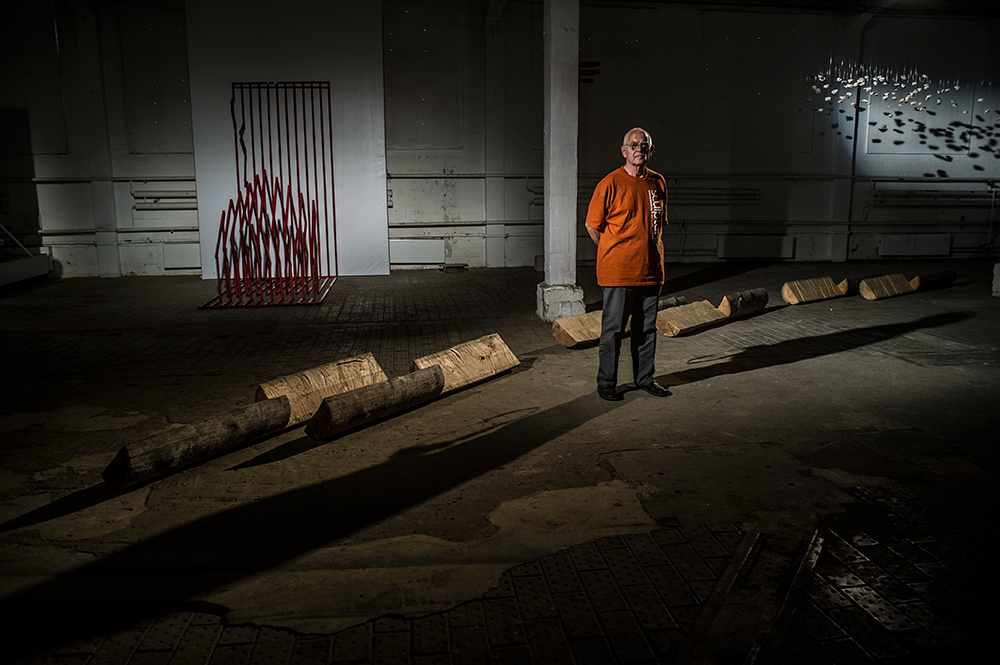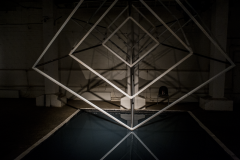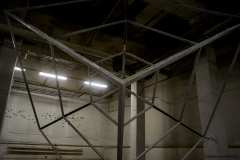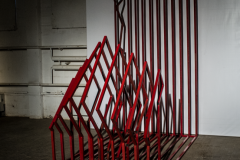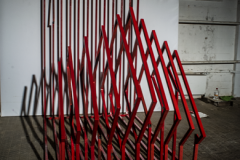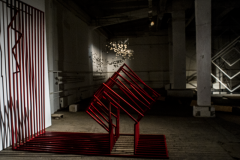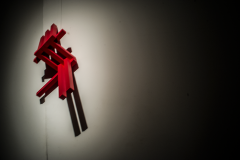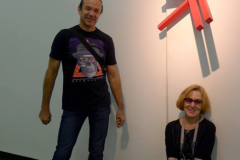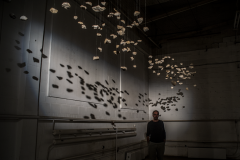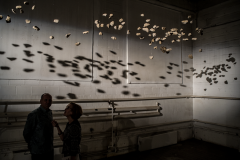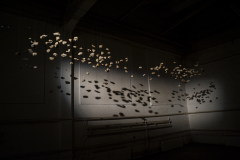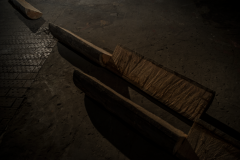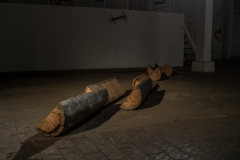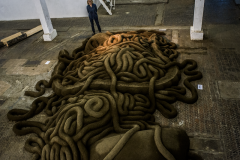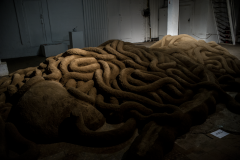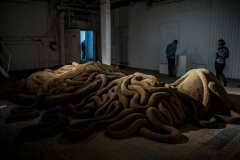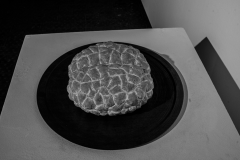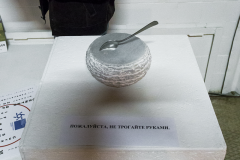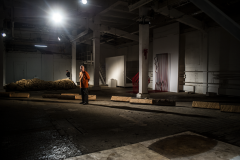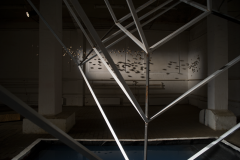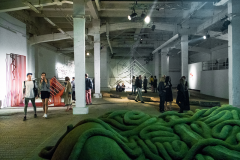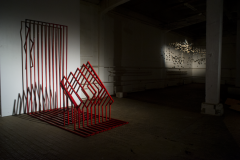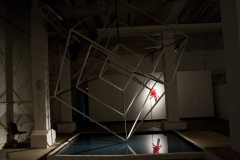Ekaterina Sisfontes - a life of an artist
The Center of a Point is Aside
Spec Project of 6th Moscow Biennal of Contemporary Art
2015
Curator: Elena Shipicina
Producer: Ekaterina Sisfontes
THE CENTRE OF A POINT IS A SIDE
We all inhabit a world undergoing a complete shift in space and time, existing within an era of displaced concepts, blurred boundaries, amalgamated cultures, and territories bearing substituted historical values. Modern optical perception appears blurred, yielding to glitches that fracture reality into a mosaic of projections within the minds of perceivers. While observing natural phenomena, we seek to relate to them through numbers and formulas, weaving symbols into theories and laws, all while attempting to enhance our understanding of the world. Does this pursuit truly unveil the essence of our surroundings? Can we assert the stability and validity of the matter enveloping us? Five minimalist artists, hailing from five distinct countries, delve into the world by revisiting fundamental categories of the world’s structure – points, lines, space, light, rhythm, surface, and weight. Employing diverse artistic methods and techniques, they craft a collection of conceptual sculptures within the exhibition space, challenging the traditional optical perception of the audience. Tanya Preminger (Israel) weaves an intricate tapestry of soil, unraveling the essence of earth as a solid element. Laurent Reynès (France) conjures a “flow” of macro-dust, composed of multiscale stones suspended above spectators’ heads. Lucien den Arend (Finland) engineers spatial objects that reverse the relationship between form and emptiness, “internal” and “external.” Valeriy Kazas (Russia) strips walls of their impermeability and weight, defying gravity’s laws by creating the illusion of objects seamlessly and entirely penetrating walls, ceilings, and floors. Ekaterina Sisfontes (Sweden) introduces two objects with an optical effect of a “displaced center.” The purpose behind this creative experimentation is rooted in the artists’ desire to highlight the manifold semantic and aesthetic perspectives modern viewers garner from the world. This is achieved by embracing the succinct and structured clarity of natural forms. E. Shipicina, Curator, Art director of the Ekaterinburg Gallery of Modern Art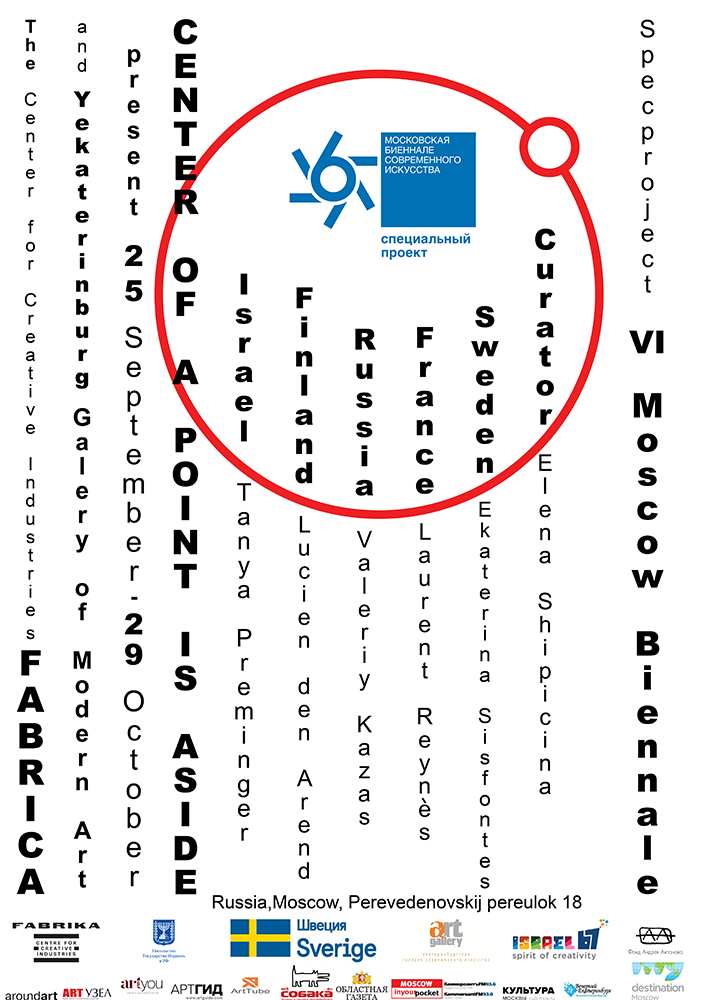
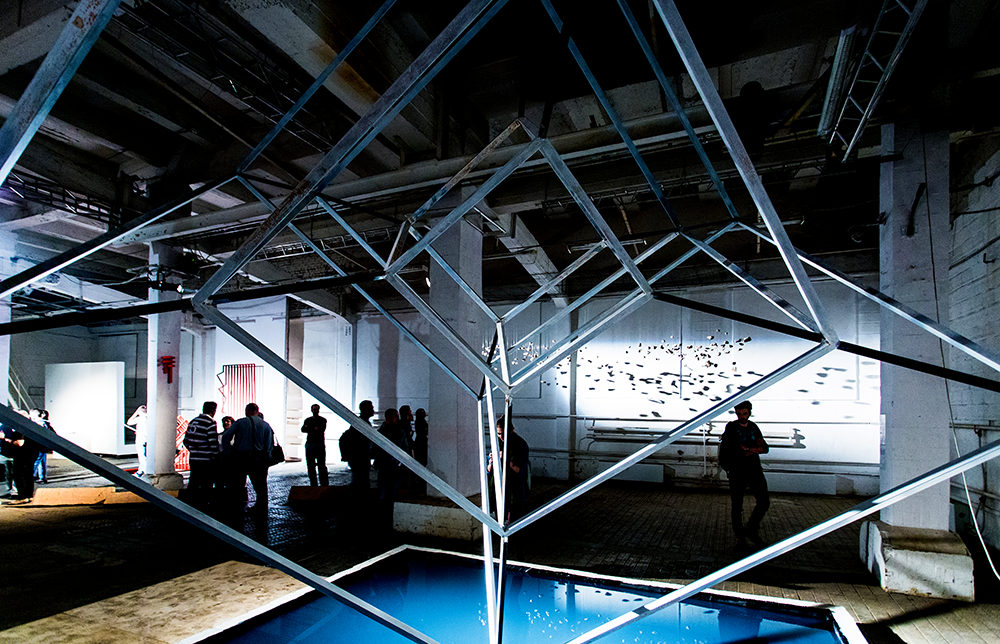
THE CENTER FOR CREATIVE INDUSTRIES (CCI) FABRIKA
The expansive area at Project Fabrika encompassed 513 square meters and reached a height of 6 meters. Founded in 2004, PROEKT_FABRIKA stands as the pioneering independent non-profit organization dedicated to contemporary visual art within Moscow. With a repertoire that includes over 700 square meters of exhibition spaces, an international residency program, and an additional 1000 square meters designated for hosting diverse cultural and social events, such as dance performances, theatrical productions, and music concerts, PROEKT_FABRIKA has become a dynamic cultural hub. Initially conceived as a platform for collective exhibitions, the project has evolved to embrace its mission of championing cultural and intellectual diversity through the presentation of international contemporary art and culture. In 2008, the center proudly joined the esteemed ranks of Trans Europe Halls, a European network encompassing independent cultural centers.Participating artists
Installation “Hypercube”
2015
steel pipe, welding, acrylic
Size 3x3x3 meters, the pool is 4×4 meter
Ekaterina Sisfontes (Sweden)
The aspects of reality that escape our visual perception often elude our conscious awareness. The concept of a four-dimensional cube, a theoretical construct conceived by mathematicians, serves as a simplified representation of our cognitive processes. Naturally, the actual intricacies of a self-rotating cube in perpetual motion, existing in all its potential manifestations simultaneously within the tangible world, are significantly more complex.
Installation PARALLELLS
steel pipe, welding, acrylic.
Size 3x3x1,5 meter
Ekaterina Sisfontes (Sweden)
Parallel lines do not always maintain their parallel nature to themselves. By liberating the world from rigid fixations, I am driven to unveil its boundless potential. Position yourself with your feet comfortably apart, soften your focus, allowing your gaze to detach from the surroundings. Relax and envision the world’s foundational aspects undergoing an unceasing transformation.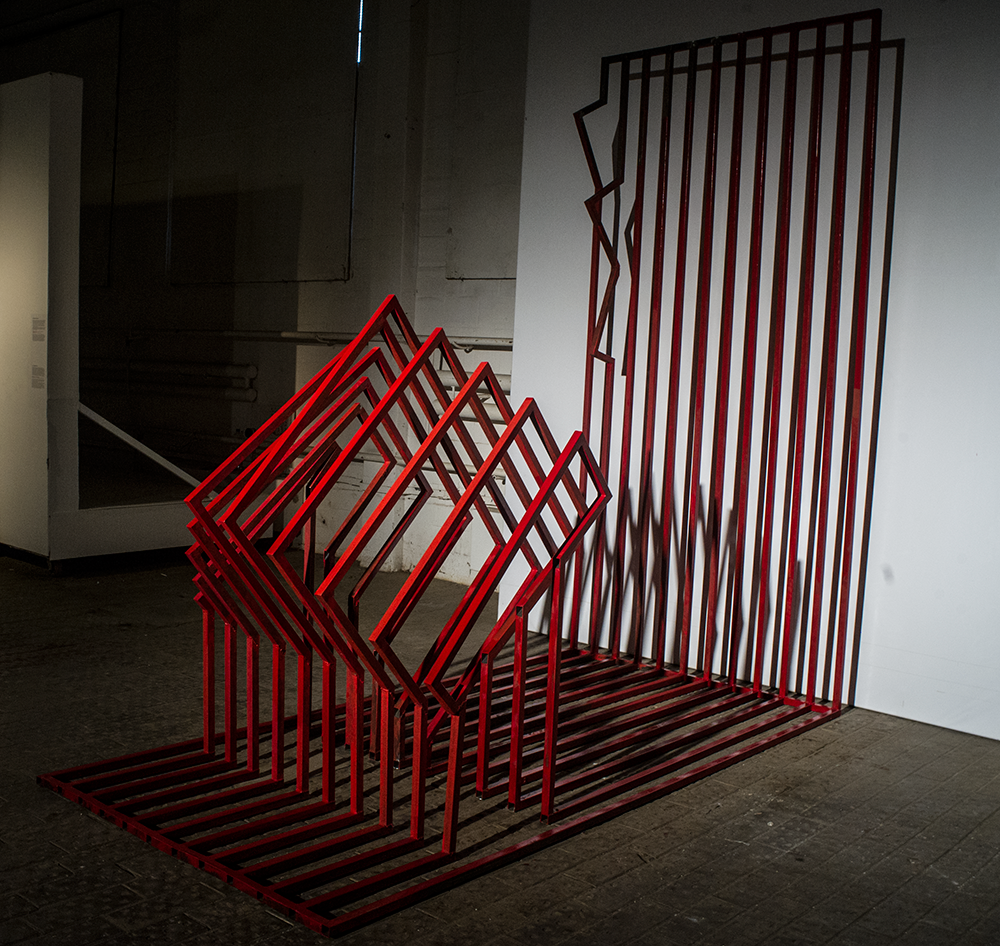
HARAKIRI
2015
soil
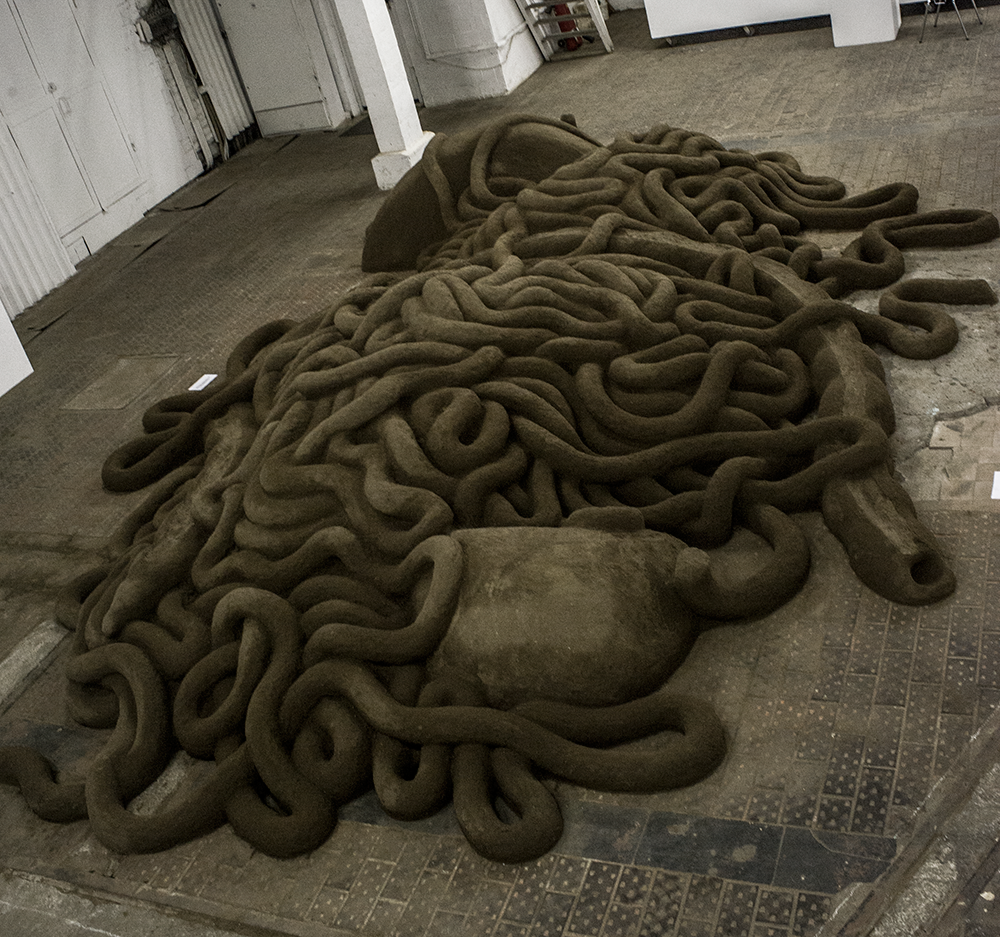
Tanya Preminger (Israel)
Tatyana Preminger’s artistic process revolves around distorting conventional structures, and her artworks serve as affirmations of her connection to the sculptor’s realm. She employs stone and earthen textures to delve into the philosophical concept of matter and its boundary states. Her installation titled “Harakiri” is crafted from soil, symbolizing Earth’s threshold between life and death. The artist draws a parallel between the Earth’s soil and the bodies of oppressed and tormented beings, ready to undergo a purifying suicide to liberate the spirit from the shackles of the tainted body. Tanya Preminger embraces a pantheistic worldview that perceives Earth as a living, evolving organism with its own consciousness. Her stone sculptures, “The Main Meal” and “Soup,” further enrich the thematic landscape of her project. They satirize human rationality’s conceit while asserting the intricate interdependence between the world and humanity.Installation RED ON THE WALL
2015
metal, wood, acrylic.
Valeriy Kazas (Russia)
Valeriy Kazas, born in 1964 in Krasnodar, Russia, completed his higher technical education in the same city. With over 25 years of experience in sculpture, he has been actively exhibiting his work since 1996. In 2013, he brought to life his first large-scale project, “Perm CORAL REEF,” which delved into large landscape sculpture. Kazas is a regular participant in the art residence in Kotor, organized by Marat Guelman in Montenegro, and he currently resides and works in Krasnodar.
Kazas engages with a seemingly ordinary situation—a vast, blank, white space punctuated by a minor event, a red spot, randomly positioned within it. While on the surface, this might not seem novel or innovative, it serves as a straightforward observation: a single point of action impacting a seemingly boundless and empty expanse. This is akin to a lifeless mosquito (preferably full) on a sterile wall; regardless of the wall’s size, its sterility is compromised. Additionally, a single sighting of the spot captures your complete attention, persistently reminding you of its presence.
Similar dynamics apply to sculptures in urban environments—whether visible or not, they occupy a continuous existence. In this context, the focus shifts away from the intrinsic nature of the object to its interaction with expansive and vacant space. The red spots, in this case, represent static, elementary structures placed on walls without adherence to compositional or representational balances. They are products of spontaneity, driven by the act itself. Neither form nor placement holds significance; the pivotal factor is scale, as space emerges as the essence of rhythm.
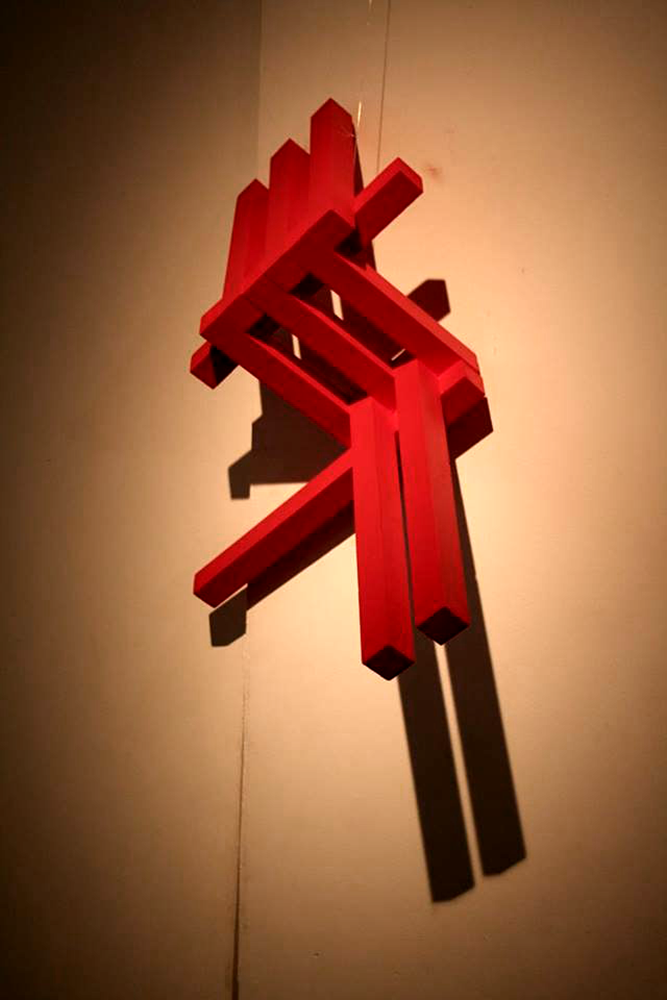
Installation AERIALS
2015
stone, metal, nylon thread.
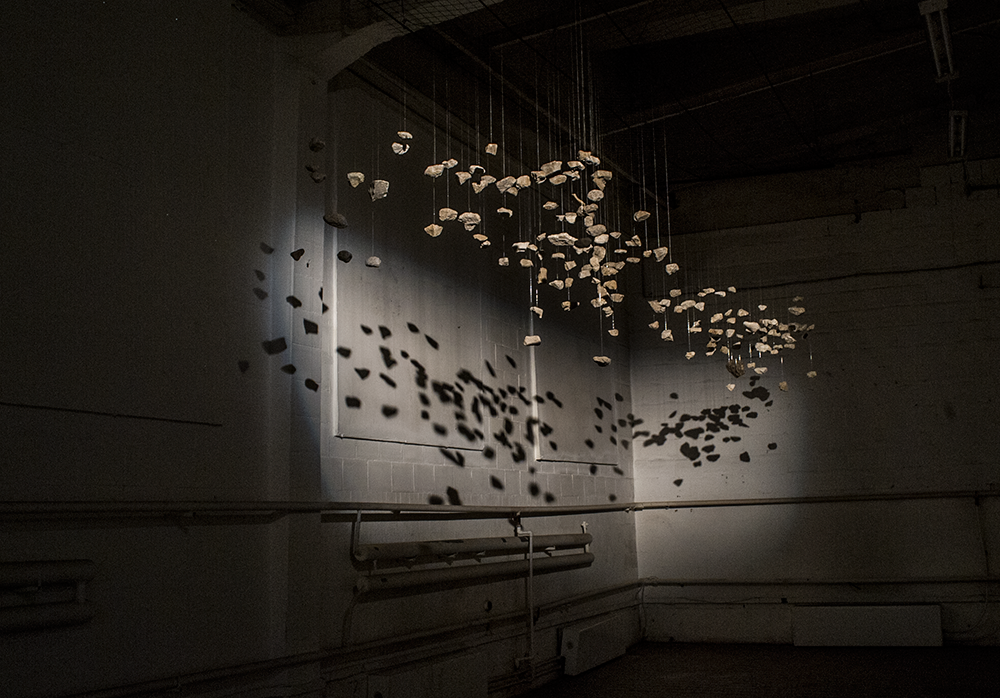
Laurent Reynès (France)
Born in 1961 in Montpellier, this sculptor holds a Doctor of Fine Arts degree. Additionally, they are a DPLG Architect and have been a Professor at the Strasbourg School of Architecture since 1994. The core concept they emphasize is the shared existence of humanity on a singular stone suspended in space, yet there are billions of us, and our collective presence remains enigmatic. The weight and lightness of an object can oscillate depending on its surroundings and the context it occupies. These stones traverse both space and time, undergoing transformations through processes such as erosion, which gradually alter their physical attributes and propel them towards bodies of water and particles of dust. The distinct forms of these stones indicate the experiences they’ve encountered and the routes they’ve taken. These very forms serve as evidence that we inhabit a larger stone, Earth, which itself is in motion within the vast expanse of the universe. Within each of us, numerous metaphorical rivers flow – perhaps they signify the networks of thoughts and desires that endlessly converge and intertwine. The connection between these “rivers” are akin to the fluids existing between stones, serving as mediums and bonds that contribute to the formation of a cohesive mass. This mass becomes integral to the ceaseless movement and erosion enacted by time and life. Extracted from the Earth’s mantle, the stone gradually rolls, mirroring the fluid nature of existence itself. Ultimately, these stones symbolize the inherent perfection that underpins our existence and our world, encapsulating not only the history of our planet but even more profound insights.Sculptural objects POLAR CONSTRUCTION, 8 objects
2015
wood
Lucien Armand Marco den Arend (Finland)
My artistic approach revolves around the process of sculpting itself, emphasizing the way a sculpture is conceived rather than striving solely for a final, predefined form. Instead of pursuing an ultimate form at any cost, I focus on the most efficient path to realize a concept, essentially allowing the form to emerge from the construction process. This philosophy is reminiscent of the idea that the technique and tools employed shape the resultant form, which I’ve termed “The means is the message,” a concept I wrote about for the “Konkret Acht” exhibition in Nürnberg, Germany, back in 1988. This perspective continues to inform my work to this day. An illustrative example of this approach is evident in “Moscow perpendicular division,” where I employ a direct and geometric method to divide a cylindrical mass of wood. This procedure yields numerous identical forms that collectively comprise the primary segments of the tree. I was born in 1943 in Dordrecht, Netherlands, and I am recognized as a Dutch-Finnish artist who has made significant contributions to geometrical abstract sculpture and land art. My journey in art led me to the United States, where I resided from 1953 to the 1960s, studying art at California State University. After returning to the Netherlands, I pursued further studies at Tilburg and Rotterdam art academies, eventually teaching in Amsterdam and The Hague. My encounter with Henry Moore in the early 1970s left a notable impact on my artistic trajectory. I served as the chairman of the Association of Dutch Sculptors from 1984 to 1986, during which time I organized international exhibitions and sculpture symposiums. At present, I reside and work in Finland, where I maintain an open space and a permanent exhibition of my sculptures at the POAM (Penttilä Open Air Museum), also known as the “Open Air Museum in Penttilä.” This space offers insight into my creative journey and showcases the evolution of my sculptural works over time.